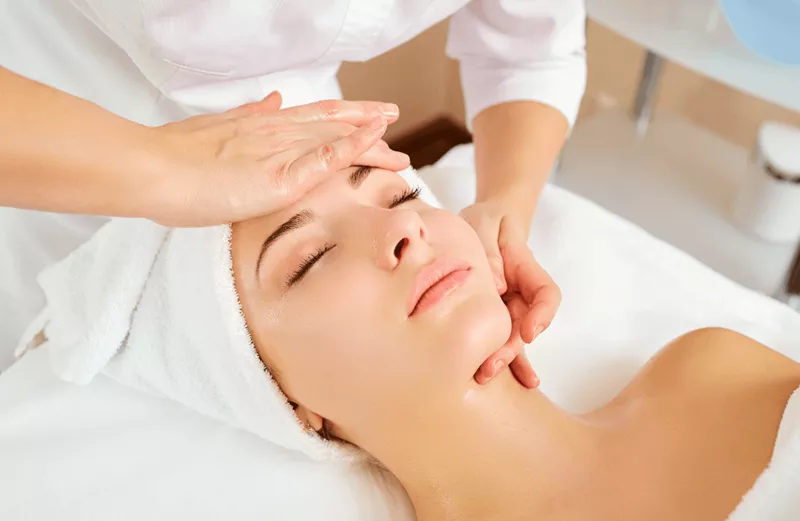The success of a skin care consultation is largely dependent on the preparation that takes place before the actual meeting with the client. A well-prepared session not only fosters trust and understanding but also ensures that both the client and the skin care professional are aligned in their goals. Before the consultation begins, several tasks should be accomplished together with the client to set the stage for a productive and effective session. These initial steps play a critical role in ensuring that the professional has all the necessary information to recommend the most appropriate treatments, while also addressing the specific concerns and needs of the client.
A skin care consultation is not just about the professional offering solutions but about working together with the client to understand their skin, preferences, and goals. Before diving into any product recommendations or treatment plans, it is crucial to gather relevant information, assess the client’s skin condition, and discuss their expectations. This phase of the process also allows the professional to educate the client on the importance of certain treatments, lifestyle choices, and skin care routines.
In this article, we will explore the key tasks that should be completed together with the client before a skin care consultation. These preparatory steps help build the foundation for a customized and successful skin care plan, leading to long-term skin health and satisfaction.
Initial Client Assessment
Before any professional treatment or advice can be offered, it is essential to begin with an in-depth assessment of the client’s current skin condition and concerns. This process involves understanding the client’s skin type, history, and goals. Effective communication is key in this stage, as the professional needs to gather enough information to customize a skin care regimen that will meet the client’s needs.
Skin Type Identification
The first step in the consultation is identifying the client’s skin type. There are generally five main skin types: normal, dry, oily, combination, and sensitive. Each skin type has its own set of characteristics and requires specific care. This step helps the professional understand whether the client’s skin is prone to acne, dehydration, redness, or other conditions. In addition to evaluating the skin’s surface, a good professional will also take into consideration any underlying factors like genetic predisposition, lifestyle, or environmental exposure.
To identify skin type, the consultant might ask a series of questions or conduct a skin analysis. They may look for signs of excessive oil production, dryness, sensitivity, or inflammation. These clues will guide the next steps of the consultation process.
Discussion of Skin Concerns
Once the skin type is established, the next important task is to discuss the client’s specific skin concerns. Many clients come to a skin care professional with particular goals in mind, such as reducing acne, minimizing wrinkles, or addressing hyperpigmentation. Some may also want to address skin texture or tone. Understanding the client’s concerns will allow the professional to focus on the areas that matter most to them.
This discussion should also include any previous treatments or skin care products the client has used. By understanding what treatments have or haven’t worked in the past, the professional can avoid recommending products or procedures that might not be effective or may even cause irritation.
Health and Lifestyle Factors
In addition to discussing skin-specific concerns, the skin care professional should inquire about the client’s overall health and lifestyle. Factors like diet, stress levels, sleep habits, physical activity, and sun exposure all play a role in skin health. For example, a poor diet, lack of sleep, or exposure to pollutants may contribute to skin conditions like acne, eczema, or premature aging.
Certain medications and underlying medical conditions can also affect the skin. The professional should ask about any health issues such as hormonal imbalances, autoimmune conditions, or other chronic illnesses, as these could influence the skin’s response to treatments. Smoking, alcohol consumption, and medication use are also important factors to consider. This conversation allows the consultant to tailor the recommendations to the client’s specific needs and avoid potential contraindications.
Setting Realistic Expectations
Once the professional has gathered all relevant information about the client’s skin and health, it’s time to set realistic expectations. This is a critical part of the consultation because it helps the client understand what they can realistically expect from the treatments and products recommended.
Explaining Treatment Limitations
Not every skin concern can be completely eradicated, and it’s important for both the client and the professional to understand the limitations of the available treatments. For example, while some products or treatments can significantly reduce the appearance of fine lines, they may not completely eliminate deep wrinkles. Similarly, some treatments can help clear up acne but may not prevent future breakouts entirely.
It’s essential that the client is aware of the time frame for seeing results and the potential need for multiple treatments or a long-term commitment to a skin care routine. This honesty helps avoid disappointment and ensures that the client understands the steps required to reach their desired results.
Discussion of Lifestyle Adjustments
In addition to professional treatments, the professional should discuss the importance of lifestyle adjustments. Skincare is not just about topical treatments; it also involves good habits, such as a proper diet, adequate hydration, and sun protection. The professional should explain how these factors contribute to the skin’s health and how incorporating these habits into daily life can enhance the results of professional treatments.
For example, if the client is concerned about acne, the professional may suggest dietary changes, such as reducing sugar intake or avoiding dairy, in addition to recommending a targeted acne treatment. Similarly, if the client is concerned about signs of aging, they may be advised to start wearing sunscreen daily and incorporate antioxidants into their routine.
Choosing the Right Products and Treatments
With a clear understanding of the client’s skin, concerns, and lifestyle, the next step is to recommend the right products and treatments. This process is typically done by customizing a skin care regimen that is specific to the client’s needs.
Product Recommendations
Based on the skin type, concerns, and goals, the professional will recommend specific products that can address the client’s needs. These products may include cleansers, toners, serums, moisturizers, sunscreens, and spot treatments. The professional should explain the function of each product and how to properly incorporate them into a daily routine.
For example, someone with oily, acne-prone skin might benefit from a gentle exfoliating cleanser, an oil-free moisturizer, and a spot treatment containing benzoyl peroxide. Someone with dry skin, on the other hand, might need a rich hydrating moisturizer, a hydrating serum, and an antioxidant-rich sunscreen.
Treatment Plan Design
In addition to recommending products, the professional should discuss potential in-office treatments that may benefit the client. These could include facials, chemical peels, microdermabrasion, or laser treatments. The professional should explain the benefits of each treatment, any potential side effects, and the expected results.
A treatment plan should be designed around the client’s needs, goals, and budget. For example, a client seeking anti-aging solutions may be offered a combination of a retinoid-based serum for home care and a series of chemical peels to accelerate cell turnover. Someone with acne scars may benefit from laser treatments alongside a daily skin care routine that focuses on reducing breakouts.
Preparing the Client for the Consultation
Before the consultation session begins, it’s also important to prepare the client for what to expect. This preparation involves setting up the right environment, making sure the client is comfortable, and helping them feel confident about the process.
Explaining the Consultation Structure
The professional should explain the structure of the consultation, including what steps will be taken, how long the session will last, and what type of information the client needs to provide. A well-structured consultation helps put the client at ease and ensures that both parties are clear on the objectives.
Creating a Comfortable Environment
The environment plays a key role in making the client feel comfortable and relaxed. A quiet, clean, and well-lit space is essential for the consultation. The professional should make sure the client is physically comfortable, offering them a seat, a clean towel, and a relaxing atmosphere. Additionally, the professional should explain any steps of the process, such as skin analysis or product testing, to ensure the client feels informed and comfortable with every action.
Conclusion
The preparatory steps taken before a skin care consultation are essential for ensuring that the session is effective and productive. By thoroughly assessing the client’s skin, discussing their concerns and goals, and setting realistic expectations, both the professional and the client can work together to achieve the best possible outcome. This collaborative approach not only enhances the client’s experience but also ensures that the skin care plan is tailored to their individual needs. By understanding the factors that contribute to healthy, glowing skin, clients are more likely to achieve lasting results and develop a positive relationship with their skin care professional.
Related Topics































